What Is An Example of a Distribution Channel Strategy?
The journey a product takes from production to end users involves a comprehensive plan known as a distribution channel strategy. This type of strategic approach plays a pivotal role in shaping the success and reach of any kind of product or service.
In this article, we’re going to delve into the ins and outs of distribution channels. We’ll explore various distribution strategies as well as highlight some real-world examples of companies that have mastered the art of effective distribution.
What Is a Distribution Channel?
First things first: what is a distribution channel? Distribution channels represent the path a product takes from its origin to the final user and the various intermediaries along this journey.
Effective distribution channels are the key to efficiently connecting product production processes and the end users that benefit from the products. It is also the key element of a full Channel Management Strategy
What Are the Types of Distribution Channels?
Different types of distribution channels exist, and the choice of a specific channel often depends on the nature of the software, target audience, and business strategy. Here are some common types of distribution channels for software:
1. Direct Sales:
- Description: Sell software directly to customers without intermediaries.
- Applicability: Suitable for companies with a strong online presence and established brand recognition.
2. Online Marketplaces:
- Description: Distribute software through online platforms or app marketplaces (e.g., Apple App Store, Google Play, Microsoft Store).
- Applicability: Ideal for reaching a broad audience, especially for mobile apps or consumer-oriented software.
3. Retail Distribution:
- Description: Sell software through physical retail stores or chains.
- Applicability: Common for consumer software with a retail package, though less prevalent in the digital age.
4. Value-Added Resellers (VARs):
- Description: Collaborate with third-party resellers who add value to the software by bundling it with additional services or customization.
- Applicability: Useful for software requiring integration or customization services.
5. Original Equipment Manufacturers (OEMs):
- Description: Partner with OEMs to have the software pre-installed on hardware devices.
- Applicability: Common for software that complements specific hardware, such as operating systems.
6. Enterprise Sales:
- Description: Directly sell software to businesses and enterprises.
- Applicability: Suitable for business software, especially solutions tailored to meet specific enterprise needs.
7. Cloud Marketplaces:
- Description: Offer software through cloud-based marketplaces (e.g., AWS Marketplace, Azure Marketplace, Google Cloud Marketplace).
- Applicability: Ideal for cloud-based software and services, providing a platform for easy discovery and deployment.
8. Freemium Model:
- Description: Provide a free version of the software with optional premium features or subscriptions for advanced functionality.
- Applicability: Effective for attracting a wide user base and converting users to paid plans.
9. Affiliate Marketing:
- Description: Partner with affiliates who promote and sell the software in exchange for a commission.
- Applicability: Particularly useful for reaching niche markets and leveraging affiliate networks.
10. Open Source Distribution:
- Description: Make the source code of the software publicly available to allow users to download, use, and modify it freely.
- Applicability: Common for community-driven projects and collaborative development.
11. Channel Partnerships:
- Description: Collaborate with channel partners, such as system integrators or consultants, to resell or recommend the software.
- Applicability: Useful for reaching specialized markets and leveraging partner expertise.
What Is the Most Common Channel of Distribution?
The best distribution channel depends on the type of product or service you’re selling and the type of customer to whom you’re selling. In general, however, direct sales is one of the most common distribution channels for B2B software. This traditional distribution model involves selling products directly to customers with no intermediaries.
What Is a Distribution Strategy?
A distribution strategy is a comprehensive plan outlining how a company will deliver its products or services to consumers. An effective distribution strategy is crucial for any business because it directly impacts market reach, customer satisfaction, and overall brand success. In short, a well-crafted distribution strategy ensures products and services get to the right place at the right time.
What Are the Types of Distribution Strategies?
There are many possible types of distribution strategies. Here are just a few examples:
- Exclusive distribution limits the number of intermediaries to maintain product exclusivity.
- Selective distribution involves strategically choosing a limited number of intermediaries based on specific criteria.
- Intensive distribution aims for widespread product availability through numerous intermediaries.
What Is an Example of a Distribution Channel Strategy?
Consider Chef Software is known for its automation platform. Chef Software has a channel partnership with AWS Marketplace. Chef Automate, the company’s continuous automation platform, is available on AWS Marketplace. This allows AWS users to automate their infrastructure and application workflows seamlessly by subscribing to Chef Automate directly from the AWS console
Or we can look at CrowdStrike, a cybersecurity company that offers its Falcon endpoint protection platform on multiple Hyperscale Cloud Marketplaces. This collaboration enables cloud platform customers to easily acquire and deploy CrowdStrike’s cybersecurity solutions directly from their cloud console. The integration with a Marketplace streamlines the adoption of CrowdStrike’s threat detection and response services for organizations using cloud infrastructure.
Channel Strategy in Distribution
Channel partnerships provide businesses with an extended reach and access to markets they may not be able to access on their own. By collaborating with established partners, companies can streamline their distribution processes by tapping into existing customer bases and leveraging fresh expertise.
More Distribution Strategy Examples
- Direct Distribution Strategy: Many companies sell directly to consumers through their own stores and websites.
- Product Distribution Strategy: Some brands, such as many luxury brands, use a selective distribution strategy to maintain the exclusivity of their branded products.
- Distribution Strategy for Small Business: Local artisanal products might focus on more affordable types of direct distribution, such as selling at farmers’ markets or through their own websites.
Importance of Distribution Strategy in a Business Plan
An effective distribution strategy ensures that resources are allocated efficiently. For instance, a well-planned distribution strategy can significantly reduce costs by reducing excessive intermediaries and low-impact channels.
Distribution Strategy Examples: Companies Doing It Right
Here are a few examples of companies that exemplify successful product distribution channel strategies:
1. Epicor Software Corporation:
Epicor is a global provider of industry-specific enterprise software. Epicor focuses on serving midmarket businesses. Through a network of authorized resellers and partners, Epicor ensures its ERP (Enterprise Resource Planning) and industry solutions reach a diverse set of industries. This includes manufacturing, distribution, retail, and services.
2. Avalara:
Avalara specializes in cloud-based tax compliance solutions. The company collaborates with a network of accounting firms, technology partners, and resellers to distribute its tax automation software. By integrating with various ERP and e-commerce platforms, Avalara extends its reach and simplifies tax compliance for businesses.
3. Veeam Software:
Veeam focuses on data management and protection solutions, particularly in the realm of backup and disaster recovery. The company relies on a robust network of channel partners, including value-added resellers (VARs), distributors, and cloud service providers, to deliver its solutions to businesses globally.
4. Tenable:
Tenable, a cybersecurity company, emphasizes vulnerability management solutions. Tenable collaborates with a network of channel partners, including technology alliances, resellers, and integrators, often directly through the AWS marketplace to provide cybersecurity solutions that help organizations manage and reduce cyber risk.
5. Infor:
Infor is a provider of cloud-based business applications and has a significant focus on channel partnerships. By working closely with resellers, consultants, and technology partners, Infor delivers its industry-specific software solutions to businesses looking for tailored enterprise applications.
Selecting the Best Distribution Channel Strategy
Getting comfortable with distribution channel strategy is crucial for any business leader who wants to boost their company’s success in a competitive market. By understanding the different options available and studying the successes of industry leaders, you can optimize your channel strategy and unlock sustainable growth for your business.
Improve Your Channel Management With Torchlite
Many organizations tend to think of channel management as a strictly-human job because relationships are built by people. And while that is true, partnership management skills can only take you so far in the business world if you don’t have the tools to effectively manage your partner portfolio. Even the most skilled carpenter can only do so much with a simple hammer, after all.
Think of Torchlite as an entire toolbox for channel partner managers: it’s a software platform that provides an entire suite of tools, capabilities, and channels that can house an entire partner portfolio. On top of that, Torchlite’s “Simply Intelligent” software design makes it easy to customize workflows, channels, and portals for each partner, meaning that as your relationships evolve, Torchlite evolves alongside them. You’ll always have the tools you need and the ability to incorporate new ones through our seamless integration. Perhaps then, it’s better to think of Torchlite as not just a toolbox, but the entire tool shop.
It’s time to set fire to the old ways of Channel Management—and Torchlite is here to offer you the match. Book a demo with us today and see the power of Torchlite software for yourself.






